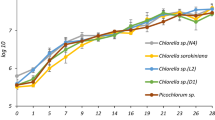Abstract
Natural fermentation was tested as a method of releasing active compounds during screening for potential anticoagulant activity in three types of algae (Pachymeniopsis elliptica, Sargassum horneri, and Ulva pertusa). Freeze dried algae samples (2.5 g) were fermented by adding 75 g of sugar and 500 mL of water and thereafter kept at room temperature (25 °C) for 3 months. Activated partial thromboplastin time (APTT), prothrombin time (PT), and thrombin time (TT) were measured every 2 weeks for 3 months to determine the optimum time for the highest activity. Fermented P. elliptica, (which had the highest activity) was subjected to anion exchange chromatography (DEAE-cellulose) and sepharose 4B gel permeation chromatography. The purified sample was analyzed by agarose-gel electrophoresis and polyacrylamide gel electrophoresis (PAGE) to confirm the purification and to determine the molecular mass, respectively. The 360 μg/mL of purified compound (Mwt > 500,000 Da) had both APTT and PT activities (>1,000 s). However, at the concentrations of 180 μg/mL, purified compound and heparin showed 540 and >1,000 s APTT activity, respectively. Though, the purified compound of P. elliptica considered as a weaker anticoagulant than heparin, this purified anticoagulant polysaccharide could be considered as a good alternative source as an anticoagulant. Moreover, the technique of fermentation is an inexpensive and feasible, this purified anticoagulant polysaccharide compound could be used in pharmaceutical and biomedical industry. Further investigations need to be performed to determine the mechanism of this novel anticoagulant compound.






Similar content being viewed by others
References
Nader HB, Pinhal MAS, Bau EC, Castro RAB, Medeiros GF, Chavante SF, Leite EL, Trindade ES, Shinjo SK, Rocha HAO, Tersariol ILS, Mendes A, Dietrich CP (2001) Braz J Med Biol Res 34:699–709
McLellan DS, Jurd KM (1992) Fibrinolysis 3:69–74
Moll S, Roberts HR (2002) Semin Hematol 39:145–157
Nunn JR, Parolis H, Russell I (1971) Carbohydr Res 20:205–215
Kolender AA, Pujol CA, Damonte EB, Matulewicz MC, Cerezo AS (1997) Carbohydr Res 304: 53–60
Nishino T, Yokoyama G, Kenji D, Fujihara M, Nagumo T (1989) Carbohy Res 186:119–129
Gamallo-Lorenzo D, Barciela-Alonso MDC, Moreda-Piñeiro A, Bermejo-Barrera A, Bermejo-Barrera P (2005) Anal Chim Acta 542:287–295
Johnston M, Johnston D, Richardson A (2005) Comp Biochem Phys Part B Biochem Mol Biol 140:251–257
Heo SJ, Jeon YJ, Lee J, Kim HT, Lee KW (2003) Algae 18:341–347
Athukorala Y, Lee KW, Kim SK, Jeon YJ (2007) Biores Tech 98(9):1711–1716
Uchida M, Murata M (2004) J App Microb 97:1297–1310
Nikapitiya C, De Zoysa M, Jeon YJ, Lee J, Jee Y (2007) J World Aqua Cult 38(3):407–417
De Zoysa M, Nikapitiya C, Jeon YJ, Jee Y, Lee J (2007) J Appl Phycol. doi:10.1007/s10811-007-9182-7 (Accepted)
Matsubara K, Hori K, Matsuura Y, Miyazawa K (2000) Comp Biochem Physiol Part B 125:137–143
Chaplin MF (1994) In: Chaplin MF, Kennedy JF (eds) Carbohydrate analysis. Information Press Ltd., Eynsham, pp 1–40
Farndale RW, Buttle DJ, Barret AJ (1986) Biochem Bioph Acta 883:173–177
Athukorala Y, Jung WK, Vasanthan T, Jeon YJ (2006) Carbohydr Polym 66:184–191
Battcock M, Azam-Ali S (1998) FAO Agricultural Services Bulletin No. 134. 1998 ISBN. 92-5-104226-8
Atlas RM (1995) In: Atlas RM (ed) Principles of Microbiology. Mosby-Year Book Inc., St. Louis, pp 147–154
Matsubara K, Matsuura Y, Bacic A, Liao M, Hori K, Miyazawa K (2001) Int J Biol Macrom 28:395–399
Grauffel V, Kloareg B, Mabeau S, Durand P, Josefonficz J (1989) Biomat 10:363–369
Matsubara K, Matsuura Y, Hori K, Miyazawa K (2000) J Appl Phycol 12:9–14
Baumann R, Rys P (1999) Int J Biol Macromol 24:15–18
Dietrich CP, Dietrich SMS (1976) Anal Biochem 70:645–647
Shanmugam M, Mody KH (2000) Curr Sci 79:1672–1682
Nishino T, Aizu Y, Nagumo T (1991) Thromb Res 64:723–31
Yang JY, Du Y, Huang R, Wan Y, Li T (2002) Biol Macrom 31:55–66
Kolender AA, Matulewicz CM (2002) Carbohyd Res 337:57–68
Matsubara K, Matsuura Y, Bacic A, Liao M, Hori K, Miyazawa K (2001) Int J Biol Macromol 28:395–399
Srivastava R, Kulshreshtha DK (1989) Phytochemistry 28:2877–2883
Nagase H, Enjyoji K, Minamiguchi K, Kitazato KT, Kitazato K, Saito H, Kato H (1995) Blood 85:1527–1534
Nagase H, Enjyoji K, Shima M, Kitazato K, Yoshioka A, Saito H, Kato H (1996) J Biochem 119:63–69
Nagase H, Enjyoji K, Kamikubo Y, Kitazato KT, Kitazato K, Saito H, Kato H (1997) Thromb Haemost 78:864–870
Acknowledgments
This work was supported by the Marine and Extreme Genome Research Center Program, Ministry of Marine Affairs and Fisheries, Republic of Korea. Prashani Mudika Ekanayake was supported by a research assistant program by Brain Korea 21 project.
Author information
Authors and Affiliations
Corresponding author
Additional information
The authors Prashani Mudika Ekanayake and Chamilani Nikapitiya contributed equally to this work.
Rights and permissions
About this article
Cite this article
Ekanayake, P.M., Nikapitiya, C., De Zoysa, M. et al. Novel anticoagulant compound from fermented red alga Pachymeniopsis elliptica . Eur Food Res Technol 227, 897–903 (2008). https://doi.org/10.1007/s00217-007-0802-x
Received:
Revised:
Accepted:
Published:
Issue Date:
DOI: https://doi.org/10.1007/s00217-007-0802-x



